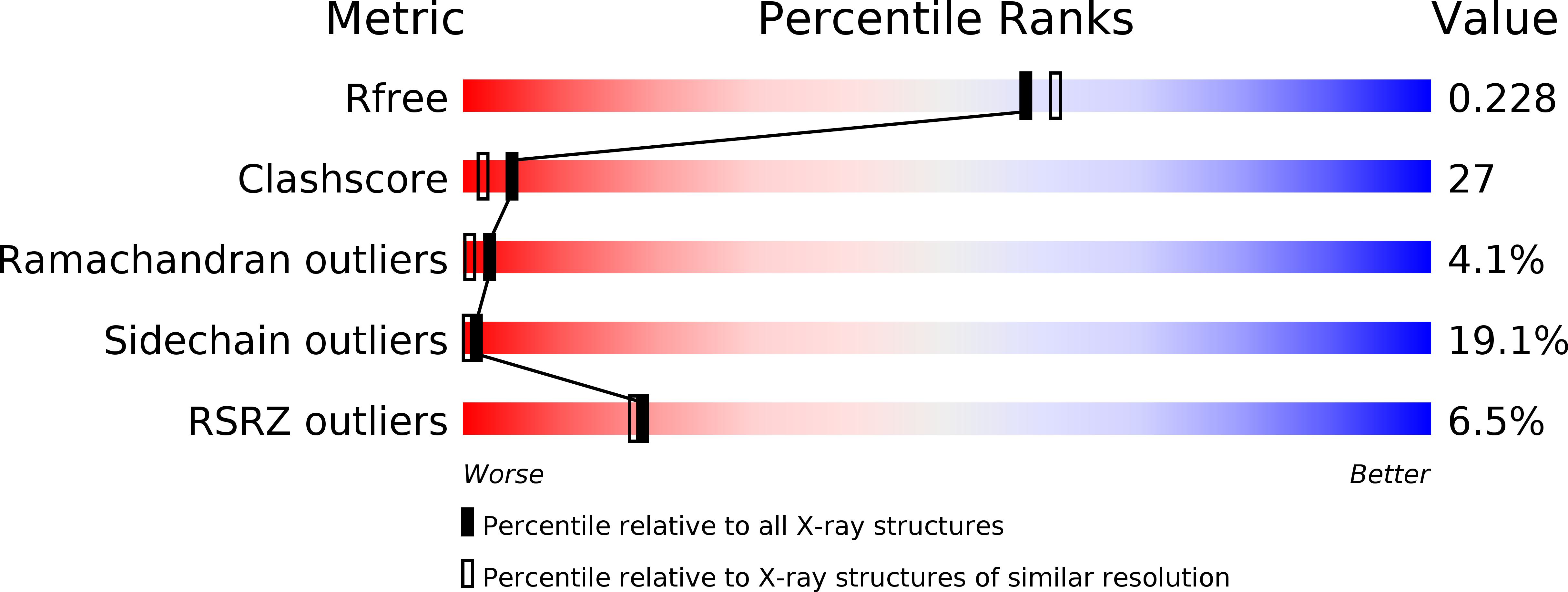Interaction between non-heme iron of lipoxygenases and cumene hydroperoxide: basis for enzyme activation, inactivation, and inhibition
Vahedi-Faridi, A., Brault, P.A., Shah, P., Kim, Y.W., Dunham, W.R., Funk, M.O.(2004) J Am Chem Soc 126: 2006-2015
- PubMed: 14971933
- DOI: https://doi.org/10.1021/ja0390855
- Primary Citation of Related Structures:
1ROV - PubMed Abstract:
Lipoxygenase catalysis depends in a critical fashion on the redox properties of a unique mononuclear non-heme iron cofactor. The isolated enzyme contains predominantly, if not exclusively, iron(II), but the catalytically active form of the enzyme has iron(III). The activating oxidation of the iron takes place in a reaction with the hydroperoxide product of the catalyzed reaction. In a second peroxide-dependent process, lipoxygenases are also inactivated. To examine the redox activation/inactivation dichotomy in lipoxygenase chemistry, the interaction between lipoxygenase-1 (and -3) and cumene hydroperoxide was investigated. Cumene hydroperoxide was a reversible inhibitor of the reaction catalyzed by lipoxygenase-1 under standard assay conditions at high substrate concentrations. Reconciliation of the data with the currently held kinetic mechanism requires simultaneous binding of substrate and peroxide. The enzyme also was both oxidized and largely inactivated in a reaction with the peroxide in the absence of substrate. The consequences of this reaction for the enzyme included the hydroxylation at C beta of two amino acid side chains in the vicinity of the cofactor, Trp and Leu. The modifications were identified by mass spectrometry and X-ray crystallography. The peroxide-induced oxidation of iron was also accompanied by a subtle rearrangement in the coordination sphere of the non-heme iron atom. Since the enzyme retains catalytic activity, albeit diminished, after treatment with cumene hydroperoxide, the structure of the iron site may reflect the catalytically relevant form of the cofactor.
Organizational Affiliation:
Department of Chemistry, University of Toledo, 2801 West Bancroft Street, Toledo, Ohio 43606, USA.





















